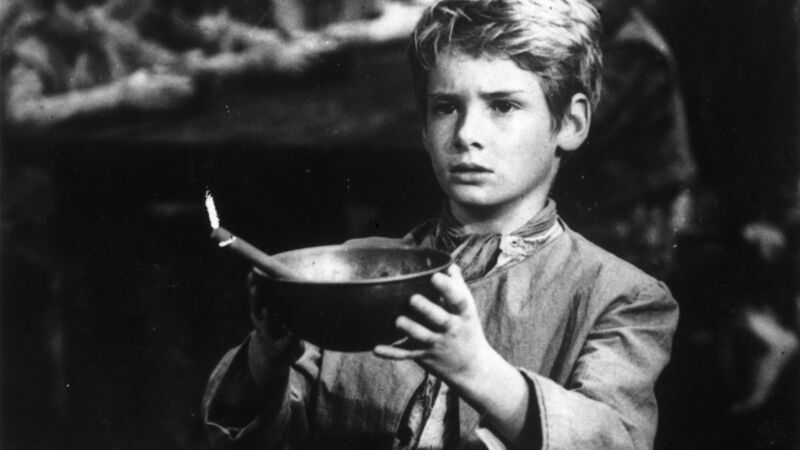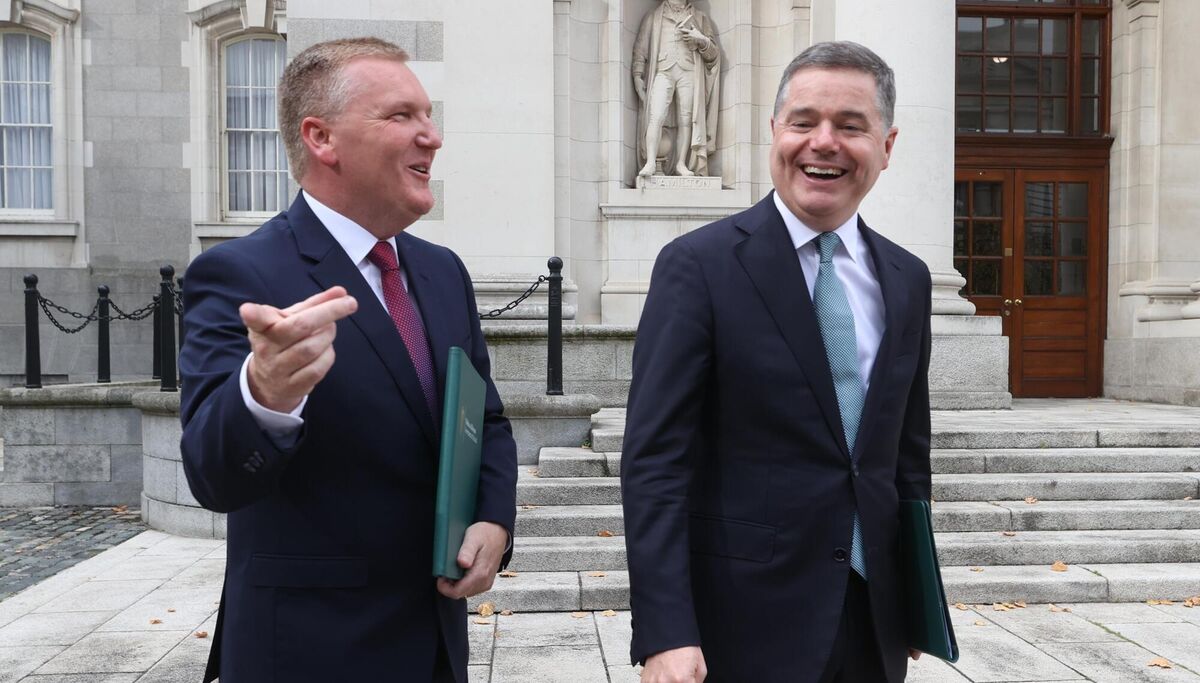Spending on health should be seen as an investment, not just as a cost

'Please sir, can I have some more?' The famous line from Oliver could easily have been said by Stephen Donnelly to Paschal Donohoe and Michael McGrath in the run-up to last week’s budget. Picture: Keystone/Getty Images
“Please sir, can I have some more?”
The famous line from could easily have been said by Stephen Donnelly to Paschal Donohoe and Michael McGrath in the run-up to last week’s budget.
However, much like Oliver, he appears to have been greeted with an incredulous, and not very sympathetic, response. Since the budget was announced, HSE chief executive Bernard Gloster has said the allocation for next year will not be sufficient. So, should health have received more in the budget?
To be fair to Ministers Donohoe and McGrath, they look at health in a wider context of other Government departments looking for their share of the fiscal pie. Few would argue with the need for more teachers, gardaí or naval personnel to patrol our waters.
However, the Government also wanted to lower taxes, which makes it harder to expand services, particularly in an economy which is only expected to see modest growth next year.
It is in this context they decided to give health only a modest increase next year compared with this year’s allocation. However, when you consider health spending will overrun by over €1bn in 2023, this means essentially the health system will need to operate with less money next year than it will spend this year. So why is the health budget rising year on year?
There are a number of factors behind this. Firstly, we have a growing and ageing population in Ireland, which leads to an increase in demand for health services every year.
Furthermore, our population is ageing faster than in many other European countries (and the older people are, the higher their healthcare needs on average), while our population growth has been faster than expected.
The Sláintecare plan for the health service and the associated Health Service Capacity Review were based on population projections using the 2016 Census as a base. Ireland’s population in last year’s Census was almost at the level predicted for 2026, and it almost certainly exceeded that level by the end of 2022.

A second factor placing ongoing upward pressure on costs is medical inflation. New drugs, medical devices and procedures are being developed all the time. While these are more effective than the ones that they are replacing, they are almost inevitably also more expensive.
Combined with the population growth mentioned above, this means the health service needs an increase in its budget every year just to stand still, before there is any expansion in services.
On top of this ‘standing still’ amount, however, some services have been expanded in recent years, in line with the Sláintecare proposals. For example, this year we have seen a widening of the eligibility for GP Visit cards, bringing nearly half a million more people into this category. GPs will now be paid a capitation rate for these patients, increasing State spending, while reducing private spending.
The effects of the covid-19 pandemic are also still being felt. In addition to putting severe strain on our health services from 2020 to 2022, the pandemic also caused many people to delay seeking care. These people are now seeking care, but in some cases, their illnesses have progressed to the point where they need more intensive — and more expensive — treatment.
Ireland has taken in tens of thousands of refugees fleeing the war in Ukraine, many of whom need significant medical and psycho-social support, which is also adding to demand for services.
Another effect of the war has been felt by households across Ireland in the form of rising energy and food costs over the past 18 months. The health service is no different in terms of facing increased energy bills, and unlike many areas of government spending it has also been affected by rising food costs, as hospitals and residential facilities also provide meals to patients.
Another contributory factor to increased health spending is the effect of the public sector pay deal, which has increased pay rates to help offset the cost-of-living increases felt by workers. This disproportionately affects health, which is a very labour-intensive area of public services.
On Budget Day, Mr Donohoe announced a review of costs in the HSE, which is due to be completed by the end of this year. Reading between the lines, the implication of this seems to be that, if the HSE wants to expand services next year, it will have to fund this from savings elsewhere in the system.
However, while it is reasonable to expect that, in an organisation the size of the HSE, there is scope for some efficiency savings, it is unlikely that these would be of a magnitude that would realistically fund any noticeable increase in services.
A criticism that is sometimes levelled against the Irish health system is that we are spending a large amount relative to other countries but not seeing a health service that we should expect with this level of spending, so is there anything to this argument?
Figures from the OECD show that, in 2019 (the last year pre-pandemic, which gives us a better sense of the true picture), our per capita spending on health, adjusted for exchange rates and purchasing power, ranked 13th in the OECD, so we are not as high-spending as some might imagine (and the provisional figures for 2022 suggest that we have now slipped to 15th).
Furthermore, although we are spending a reasonable amount per capita now, this was not always the case.
The country that was in 12th place in 2019 was France, which spent about 4.5% more than us on a per capita basis that year.
However, if we look at the situation since the turn of the century, on average the French have spent 10% more than us on a per capita basis, while if we look at what happened during the previous three decades (from the 1970s to the 1990s inclusive), they spent an average of over 70% more per capita than we did, adjusted for exchange rates and purchasing power.
Our health system still has not fully recovered from the cutbacks in the late 1980s and early 1990s in particular — indeed we still have fewer hospital beds now than we did in 1980.
It is also worth pointing out that health spending internationally, both on a per capita basis and as a proportion of economic activity, has been rising steadily for decades, reflecting growing and ageing populations and advances in medical technologies.
This is not necessarily a bad thing, however — our life expectancy now is significantly higher than it was a generation or two ago — but it just comes with a cost.
That being said, health spending can be seen not just as a cost but rather as an investment. If we invest more in health now, then our future spending should be less than if we don’t invest.
This principle underlies Sláintecare, which calls for an increase in health spending over its 10-year timeframe, with a view to improving the system and reorienting it away from hospital care and more towards primary, community and continuing care, where people are treated as close to their homes as possible. That, along with better health outcomes, might just be worth the extra cost.
- Brian Turner is a health economist at UCC
















